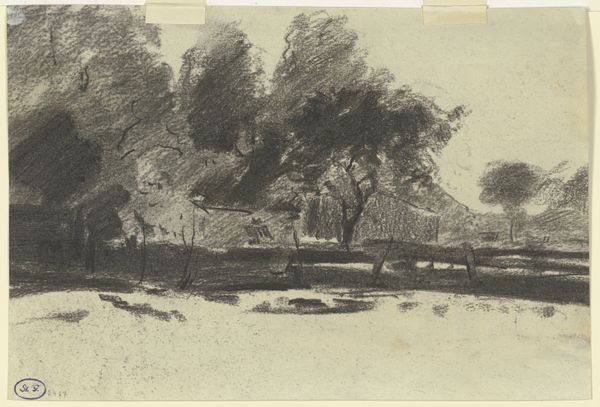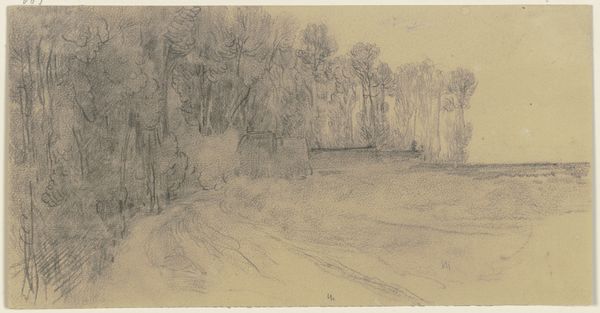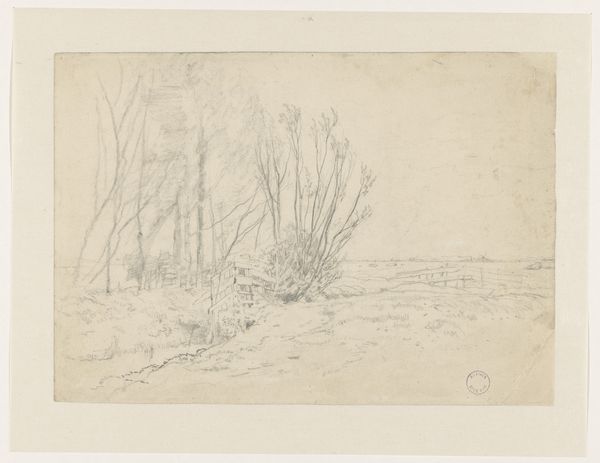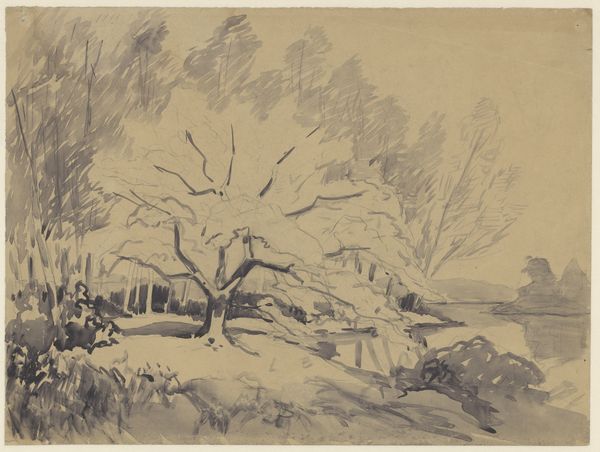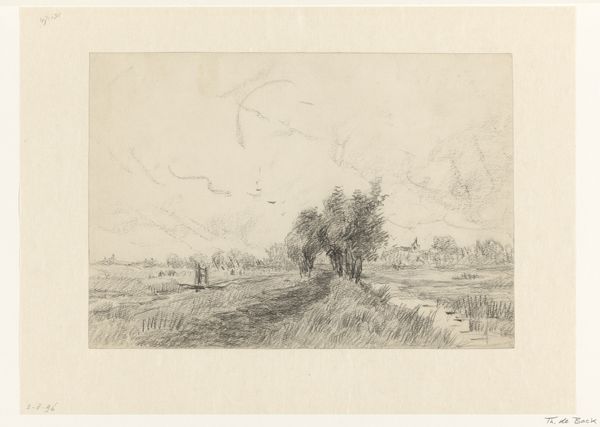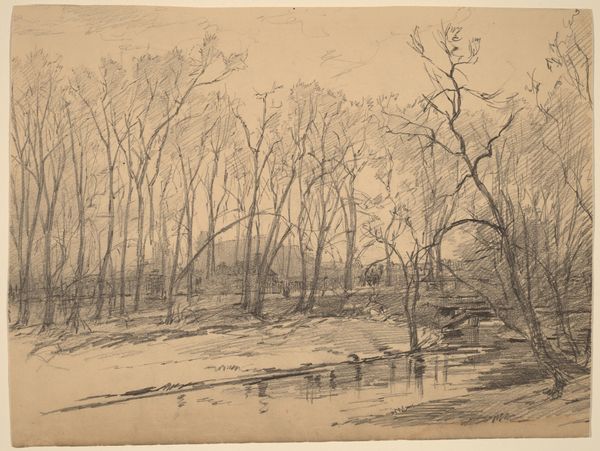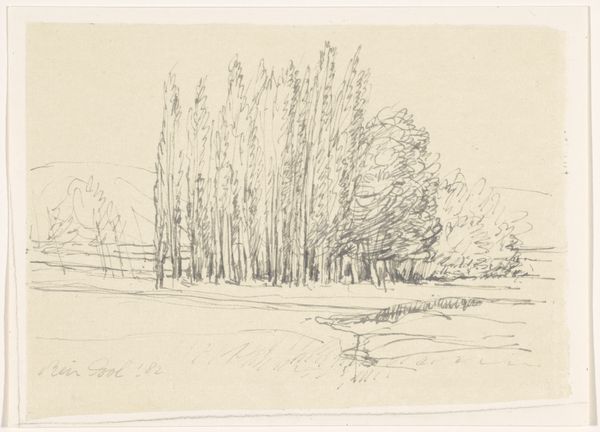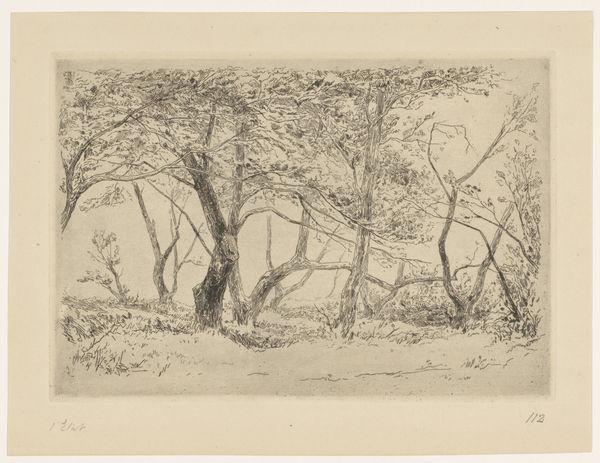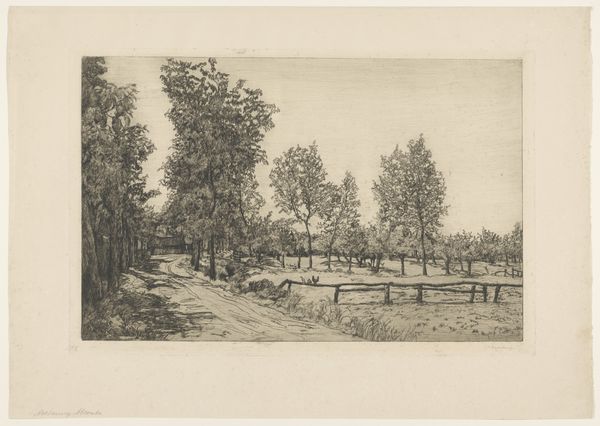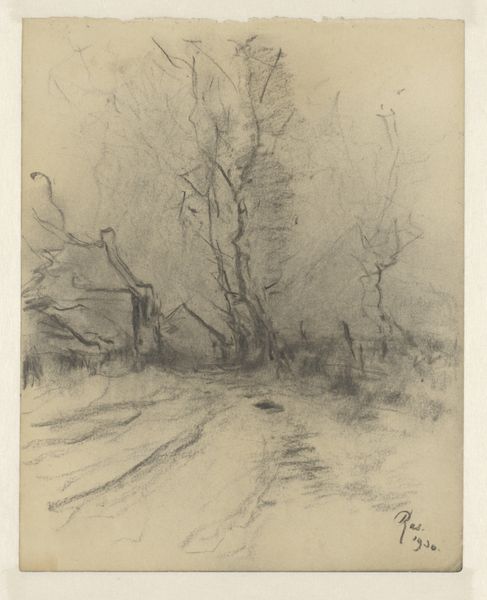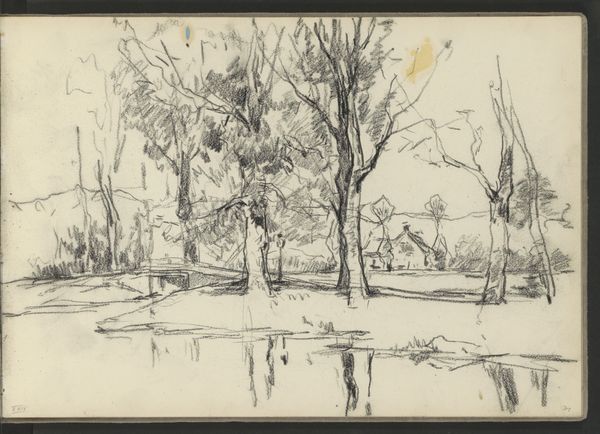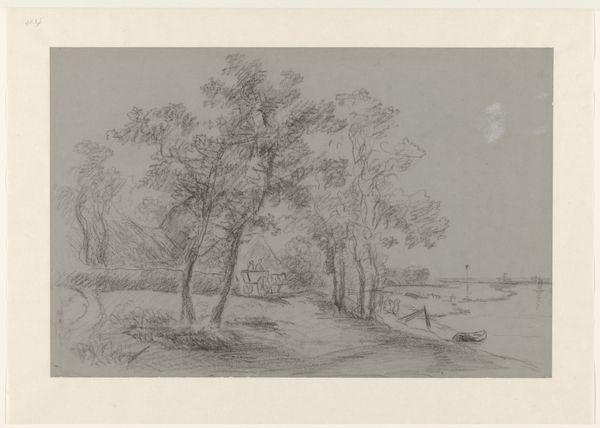
drawing, paper, pencil
#
drawing
#
landscape
#
etching
#
paper
#
pencil drawing
#
forest
#
pencil
#
realism
Dimensions: height 318 mm, width 494 mm
Copyright: Rijks Museum: Open Domain
Curator: This is a pencil drawing by Piet Meiners, dating from between 1867 and 1903. It's titled "Boerderij bij bosrand met hoge bomen bij Harskamp," or "Farm by forest edge with tall trees near Harskamp." You can find it here at the Rijksmuseum. Editor: Immediately, I'm struck by the somber atmosphere. It feels quite hushed and still. The composition, the soft pencil strokes, create an almost ghostly quality. Curator: It's a study in realism, certainly. Meiners was known for capturing the Dutch landscape, aiming to portray its natural beauty and the rustic life within it, avoiding idealization. The location, Harskamp, was a rural area. Editor: And the choice of such muted tones contributes to this mood. Everything blends seamlessly into one another. One begins to wonder about the farmers, what impact the environment had upon them, both economically and socially, if they were at the whim of it. Curator: Yes, the subtle gradations achieved through pencil work evoke a sense of place, the kind of place where one's existence is completely interlaced with nature, which speaks volumes of nineteenth-century agrarian societies in the Netherlands. The scale is deceptively modest, yet it captures an expansiveness that’s characteristic of landscape painting. Editor: Thinking about this today, how much that agrarian life has altered! The role of agriculture, our relationship to the land and to each other, it all has been irrevocably altered and is in continuous change. The drawing makes you reflect on those past modes of existence. Curator: Absolutely, and within a museum setting like the Rijksmuseum, that role and the ways we document it as historians carries significance, doesn't it? These kinds of sketches document aspects of everyday life that often get overlooked in grand historical narratives. Editor: Exactly, and that's where the power of this lies. To reveal how interwoven nature, history, and identity are for us, and for those that came before us. It shows us we need to see beyond aesthetics and appreciate its ability to speak on collective experiences. Curator: Well, hopefully, this visit has illuminated some fresh perspectives. Editor: Indeed, an intriguing glimpse into rural Netherlands through Meiners' eyes and hands.
Comments
No comments
Be the first to comment and join the conversation on the ultimate creative platform.
